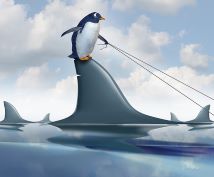I suspect we’re all on a treasure hunt. The treasure we’re looking for is our better self, or authentic self, or True Self. Lots of people get waylaid, and they go looking for treasures of lesser importance.
 In our searching, higher aspirants look for knowledge, truth, and beauty; lower aspirants seek advantage over others, easy pickings, and flattering attention. Higher aspirants strive to practice generosity and compassion; lower ones opt for revenge and conflict. Higher aspirants establish peace within themselves and among others, while lower ones are mired in both inner conflict and outer conflict.
In our searching, higher aspirants look for knowledge, truth, and beauty; lower aspirants seek advantage over others, easy pickings, and flattering attention. Higher aspirants strive to practice generosity and compassion; lower ones opt for revenge and conflict. Higher aspirants establish peace within themselves and among others, while lower ones are mired in both inner conflict and outer conflict.
A major difference between higher and lower aspirants is the degree of inner conflict at play in the psyche.
Really, if we want to be happy, we need to consider the quality of our aspirations. If our aspirations are mainly of lower quality, we’re probably tangled up in inner conflict. This conflict produces fear, self-doubt, and animosity. It causes an emotional disconnect from our better self. The solution is to recognize the inner conflict so we can eliminate the negativity and self-defeating symptoms that it produces.
We begin by seeing inner conflict as inner chaos and emotional weakness. Everyone has a hidden stash of weakness. Be curious about it—be unafraid to look. It’s not a swastika tattooed on your butt. The chaos of inner conflict isn’t you! It’s all clinical and biological, the shenanigans of the unfinished business of human evolution.
Being strong is being willing to learn where you’re weak. Being strong is making the effort to understand the inner dynamics that cause your weakness. Being strong is not blaming yourself for weakness. Being strong is undertaking to resolve your weakness. Being strong is believing you will discover your greatness. That greatness is your destiny, which might simply consist of becoming more generous, more conscious.
What might be your main weakness—or weaknesses? You are likely, as mentioned, to be burdened with some degree of inner conflict. In our psyche, the passive side of inner conflict engages in defensiveness—excuses mostly. Meanwhile, the aggressive side of the conflict is primitive self-aggression flowing from our inner critic (alias, the superego, a super-bully kind of punk).
This aggression wants to tear you down for your alleged foolishness or worthlessness. Don’t buy into superego’s bunk! If you do, you’re being passive to the superego, which pulls rank when it butts in on your considerations.
Superego bullies little ego, which feebly defends. This is inner conflict, and it badly distorts your sense of self. Don’t take this distortion personally. The emotional and behavioral disturbances spawned by inner conflict are not your essence. Rather, they’re the brood of inner conflict’s copious irrationalities and false impressions of self.
Inner passivity and self-aggression clash like adversaries addicted to the scraps and scrapes of life. Just learn to observe the conflict. This way you see the weakness from a position of strength. Who knows why we’re this way. It’s just the way it is—weird and wonderful. No big deal, providing we’re insightful enough to overcome it.
Our life energy goes either into conflict or into creativity and self-fulfillment. The more conscious we are, the more we can choose the latter.
Another weakness is our emotional susceptibility to the first hurts of childhood. These hurts are old familiar negative emotions in which inner conflict gets entangled. There are eight: deprivation, refusal, control, helplessness, criticism, rejection, abandonment, and betrayal.
This froth of negativity is all kiddie stuff. Babies and toddlers feel this junk due to their subjectivity, their inexperience and biological self-centeredness. We adults instinctively keep up the game of feeling the old displeasure or pain. This negativity has a certain unconscious sway—it feels so weirdly familiar, as if there’s no other way we could ever be. This is our lack of inner freedom, our sticking point on the spectrum of evolution.
Our weakness here is to be thin-skinned, easily susceptible to getting triggered by one or more of these first hurts from childhood. We find it so hard to stop replaying and recycling the familiar, unresolved pain of these hurts. In this way, we’re still big babies. Impulsively, so many of us unconsciously imagine coming from others these old hurts from childhood that we’re so quick to feel in ourselves (transference).
To understand inner weakness, you begin to see how it is activated and maintained in your psyche. Remember, being strong is seeing where you’re weak. You observe yourself with some maturity (objectively), with the best knowledge of depth psychology.
Be watchful for defensiveness—and over time you’ll very likely be able to assert the ability to say, “No thanks!” to some sneaky indulgence in one or more of the first hurts.
These hurts are needless suffering! Remember, little ego says, “No, no, I don’t have this weakness. This is not true! I don’t suffer for nothing!” But it does, of course. Ego feels the weakness as a kind of inner fear, and it hesitates—often refuses—to accept the hero’s journey into the underworld of your psyche where you seek liberation from suffering and mediocrity.
Now you’re connecting with your better self. When we discover and then realize our self, we don’t, of course, see a concrete “something” representing self. But we know what we’re feeling, and what we’re feeling feels right and true. This is our inner treasure, and we have to recognize it and understand that our connection with it requires a continuing conscious appreciation of its great value.
Knowing about these inner dynamics means we’re giving the dysfunction of inner conflict its required recognition. When we own this dysfunction (become conscious of it and take responsibility for it), we can then eliminate it.
